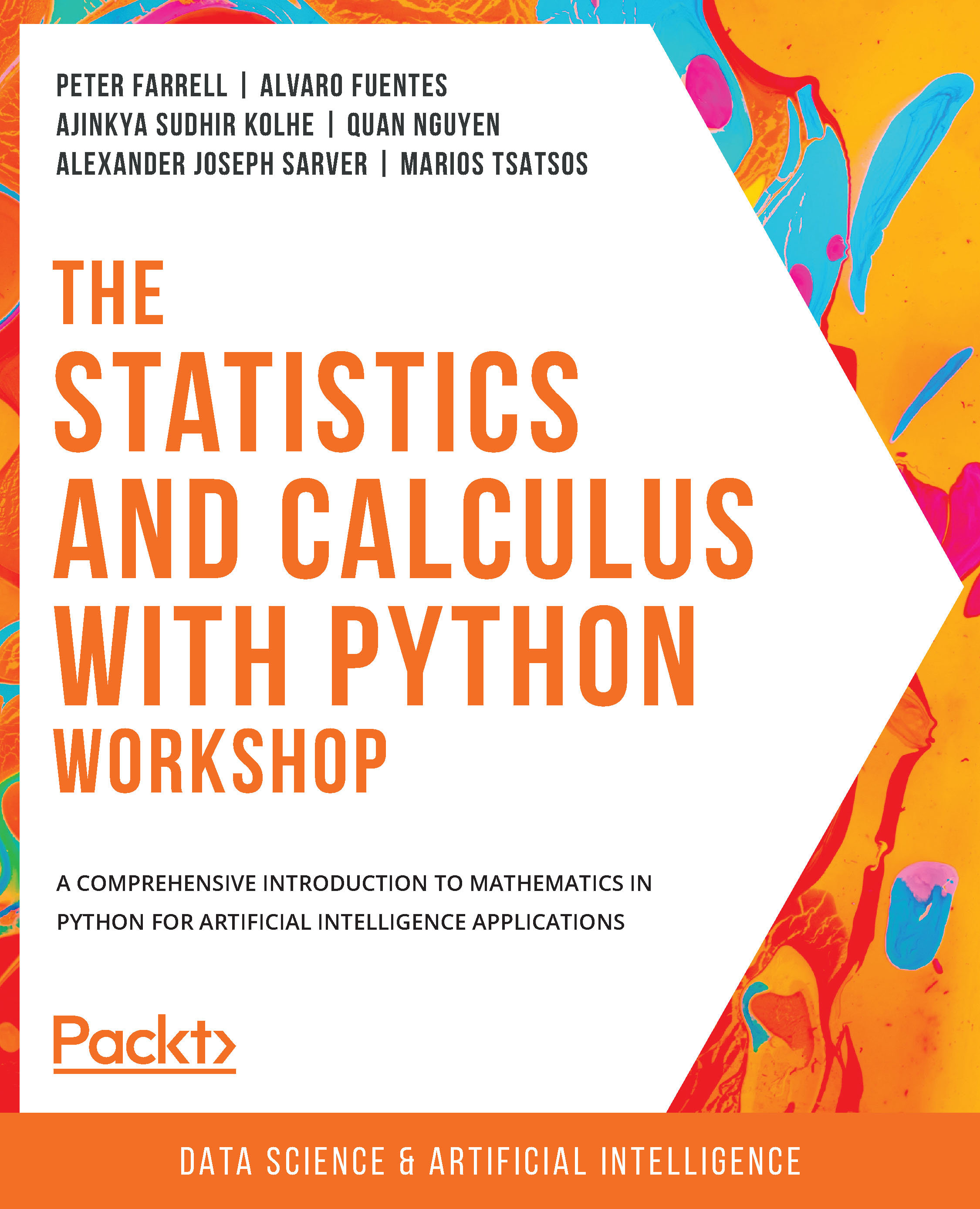- 中图分类号: O21
- 语种: ENG
- 出版信息: Packt Publishing 2020 739页
- EISBN: 9781800208360
- PISBN-P: 9781800209763
- 原文访问地址:
KG评星
知识图谱评星,是一种基于用户使用的评价体系,综合图书的评论数量、引文数量、Amazon评分以及图谱网络中节点的PageRank值(即考虑相邻节点数量和重要性)等多种因素计算而得出的评价数值。星级越高,推荐值越高。CAT核心级
核心学术资源(CAR)项目作为教图公司推出的一项知识型服务,旨在打造一套科学、有效的图书评价体系,并协助用户制定相应的馆藏建设方案。CAR项目调查和分析12所世界一流大学的藏书数据,以收藏学校的数量确定书目的核心级,核心级越高,代表书目的馆藏价值越高。选取核心级在三级以上,即三校以上共藏的图书作为核心书目(CAT)。With examples and activities that help you achieve real results, applying calculus and statistical methods relevant to advanced data science has never been so easy Key Features • Discover how most programmers use the main Python libraries when performing statistics with Python • Use descriptive statistics and visualizations to answer business and scientific questions • Solve complicated calculus problems, such as arc length and solids of revolution using derivatives and integrals Book Description Are you looking to start developing artificial intelligence applications? Do you need a refresher on key mathematical concepts? Full of engaging practical exercises, The Statistics and Calculus with Python Workshop will show you how to apply your understanding of advanced mathematics in the context of Python. The book begins by giving you a high-level overview of the libraries you'll use while performing statistics with Python. As you progress, you'll perform various mathematical tasks using the Python programming language, such as solving algebraic functions with Python starting with basic functions, and then working through transformations and solving equations. Later chapters in the book will cover statistics and calculus concepts and how to use them to solve problems and gain useful insights. Finally, you'll study differential equations with an emphasis on numerical methods and learn about algorithms that directly calculate values of functions. By the end of this book, you’ll have learned how to apply essential statistics and calculus concepts to develop robust Python applications that solve business challenges. What you will learn • Get to grips with the fundamental mathematical functions in Python • Perform calculations on tabular datasets using pandas • Understand the differences between polynomials, rational functions, exponential functions, and trigonometric functions • Use algebra techniques for solving systems of equations • Solve real-world problems with probability • Solve optimization problems with derivatives and integrals Who this book is for If you are a Python programmer who wants to develop intelligent solutions that solve challenging business problems, then this book is for you. To better grasp the concepts explained in this book, you must have a thorough understanding of advanced mathematical concepts, such as Markov chains, Euler's formula, and Runge-Kutta methods as the book only explains how these techniques and concepts can be implemented in Python.







 京公网安备 11010602104826号
京公网安备 11010602104826号
